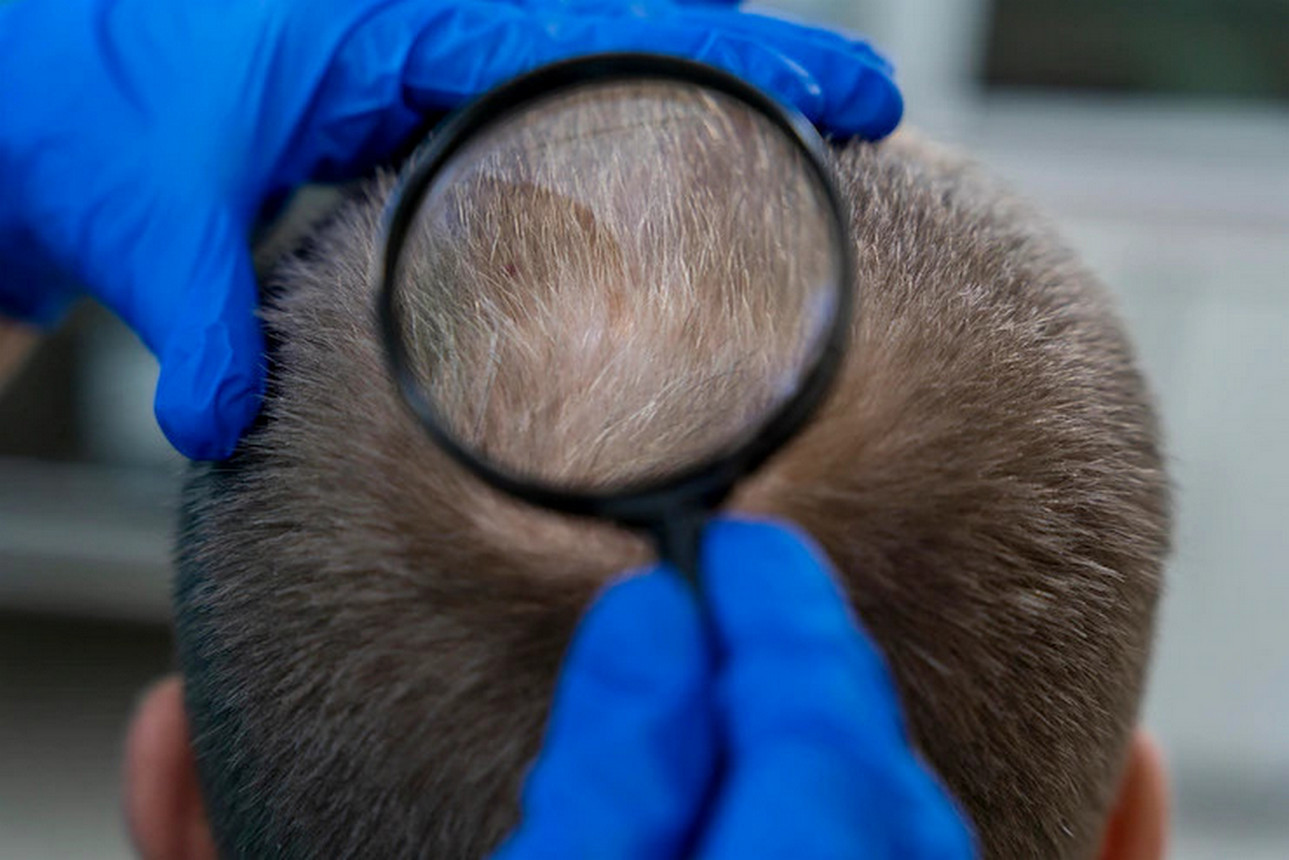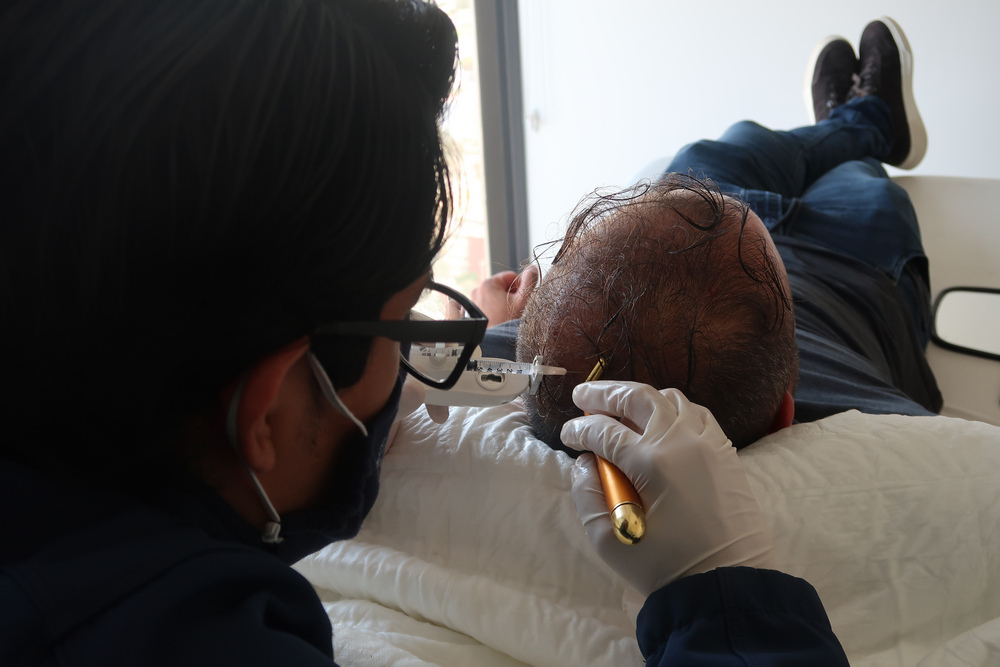As we have written before on the Hairfix blog, there are many types of alopecia that cause weakening of the hair fibers, hair loss and some skin damage. Today we will tell you about the folliculitis decalvans symptoms, one of the types of scarring alopecia that can affect the scalp and other body areas.
Tabla de Contenidos
What is folliculitis decalvans?
Folliculitis decalvans is a type of scarring alopecia that can cause permanent hair loss as a result of the hair follicles replacement by fibrous tissue, or hyalinized collagen. It is usually the result of a bacterial infection of the follicle, with a neutrophilic inflammatory response and the subsequent appearance of fibrosis. Staphylococcus aureus is believed to be involved in the development of the condition, since most patients are nasal carriers of the bacteria.
This type of alopecia usually affects young men; initially it causes damage to the scalp, and later destroys the follicle (that is, the place where the hair is born) creating bald areas that can occur on the head, beard, sideburns or other parts of the body.
Like all scarring alopecia, regardless of its cause, it is an irreversible condition since the hair does not grow back in the affected area since it causes the destruction of the hair follicle, and it usually affects areas of the body, with visible lesions.
However, it is important to note that it is not a contagious disease, although its origin is related to bacterial infections.
Symptoms
- Irritation and inflammation. This is the first symptom, and is usually comes together with stinging, pain, burning or itching of the skin in the affected area. If you have these symptoms, it is best to visit a doctor since detecting the disease in the initial phase can slow down its development, and the following symptoms are less aggressive.
- Inflammation with red pustules. This is the second stage and usually appears in the highest part of the head, or crown, causing progressive damage to the hair follicles, which is where the hair is born and, by destroying them, it is impossible for them to regenerate again.
- Accelerated hair loss. When the follicles are destroyed, the third stage begins, which is hair loss, which does not stop as it enters the telogen effluvium stage. Although timely care helps to slow down the symptoms, visiting the doctor is very important to control the disease and stop its progress. Especially since the fall is chronic and progressive, and can continue to progress to other parts of the head or body such as private parts, sideburns, neck or beard.
Folliculitis decalvans diagnosis
When the first folliculitis decalvans symptoms are observed, it is common for patients to visit a general doctor, they can also go to a dermatologist or a trichologist, who is a specialist in the scalp.

In addition to the clinical review, the specialist removes some hair and a sample of tissue or cells from the scalp to perform a biopsy and analyze the causes of hair problems in order to provide the most appropriate treatment.
Folliculitis decalvans treatment
Unfortunately, folliculitis decalvans has no cure, its progress is fast and it can leave irreversible consequences, especially on the hair. Therefore, early attention is important in order to detect the disease in the initial or middle phase.
The most recommended medications are corticosteroids and anti inflammatories to combat skin discomfort and the appearance of pustules, with which the problem is temporarily stopped. However, after the first folliculitis decalvans outbreak, there may be others and lead to bald spots.
The most recommended treatment for baldness, once the skin damage has been stopped, is a hair transplant, which provides a better aesthetic image and allows natural hair growth.
Can it affect women?
Folliculitis decalvans in women is not frequent; however, when it occurs, they can suffer from the disease in a different way, such as cystic hair, which does not grow properly and becomes covered with skin, causing an infection. However, in women it is a reversible condition and in which the hair can grow later, especially if they opt for a hair transplant.
Precautions
- The use of wigs is not recommended because they can irritate the skin.
- Avoid the use of beauty treatments, such as dyes, which can aggravate the infection.
- Do not touch or scratch the pustules, as the infection can spread throughout the body
- Do not shave or wax the affected area, since the pustules can burst and spread their progress through the body.
- Do not self-medicate or apply unprescribed products.
We hope this information will be useful to you. If you have suffered scarring alopecia damage such as folliculitis decalvans, at Hairfix you will find the treatment you need in order to recover your hair, your image and quality of life. Contact our hair restoration in Mexico through our form to schedule your appointment. We will gladly assist you. Ask us about hair transplant price in Mexico, and feel free to explore more on how stem cells for hair loss could be a revolutionary option for your treatment by reading our detailed blog.






